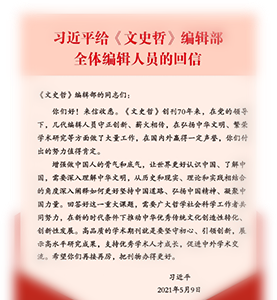礼制的特性与中国文化的礼制印记
胡新生
摘要:中国古代“礼”概念包括礼节仪式、伦理道德、政治等级三层含义,三者虽有联系但各有特定的内容。作为中国礼制史研究的对象,礼仪、礼制都是特指“礼”的礼节仪式层次。礼仪包括民间礼仪与国家礼仪,后者即通常所说的“礼制”,亦即礼仪中具有国家背景和政治强制力的部分。礼仪制度有别于其他典章制度的本质属性在于其表演性、象征性和程式化、标准化。表演性、象征性使礼仪具有高于日常生活的特殊意义和广而告之的公示功能,程式化、标准化使礼仪具有高度的组织性、规范性以及维护和强化社会政治等级的功能。中国古代礼制的发达使礼仪的两种特性得以充分发挥,从而给中国文化烙下极度重视表演和程式的印记。
The Characteristics of Ritual System and the Ritual Mark in Chinese Culture
Hu Xinsheng
Abstract: The concept of “rite” in ancient China contains three meanings of ceremony or formality, ethics, and political hierarchy. They are all intertwined, while each has certain content. As the research object of the history of Chinese ritual system, both etiquette and ritual system refers to the meaning of ceremony or formality of “rites”. Etiquette includes folk etiquette and national etiquette, and the latter, known as the “ritual system”, is the part with national background and political force. Different from other institutions, the nature of ritual system lies in its performance, symbol, stylization, and standardization. Performance and symbol make the etiquette bear the significance higher than daily life, as well as function of publicity; while stylization and standardization make the etiquette highly organized and normative, as well as have the function of maintaining and strengthening the social and political hierarchy. The high development of ritual system in ancient China had given full play of those two characteristics of etiquette, leaving the mark of highly valuing performance and formula to Chinese culture.


